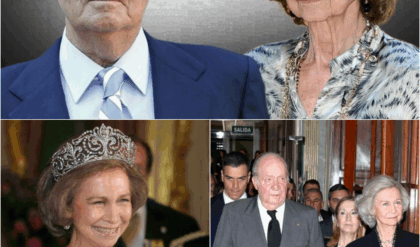
All of the greatest man-made inventions have stood the test of time. They remain living testaments to the evolutionary process and creative innovation of some of the brightest minds throughout history. While many of these are taken for granted in today’s world, blending in as just as part of ordinary life, some continue to stand out and be honored for years beyond their first introduction to society.
The Supermarine Spitfire aircraft is one of those time-honored creations. It repeatedly has its story retold, and not just through the eyes of wartime vets sharing memories. The Spitfire has become its own legend, and it continues to be reborn, from history books all over the world and even to the screen in Hollywood.
The History of the Supermarine Spitfire
The Spitfire aircraft is a British, single-seat fighter plane. It was a major player in the Royal Air Force (RAF) and other Allied countries before, during, and after the years surrounding WWII. It has many different variations with multiple wing configuration and was mass-produced in Britain during wartime.
It has even proven to be popular among enthusiasts, with up to 55 Spitfires still taking to the skies today. Beyond those, many are standing as exhibits in various aviation museums around the world.
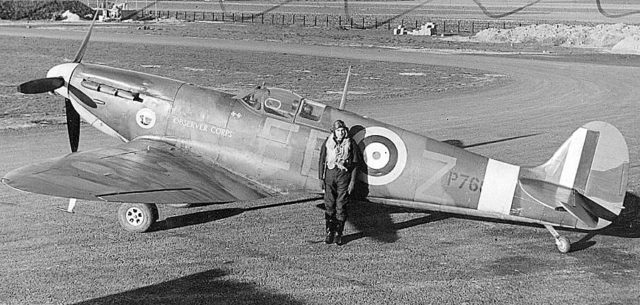
Spitfire Mk IIA, P7666, EB-Z, “Observer Corps,” was built at Castle Bromwich, and delivered to 41 Squadron on 23 November 1940.
The original Spitfire concept was designed by R.J. Mitchell, as a short-range, high-performance interceptor plane. The development of its special elliptical wing allowed for improvements in the cross-section, allowing the Spitfire to gain a higher top-speed than any other aircraft at the time, even beyond the exceptional Hawker Hurricane model.
Up until his death in 1937, Mitchell continued to sharpen his original designs. Not willing to leave behind such a promising model, Mitchell’s colleague Joseph Smith carried on with the plans for its inception. He would be the main overseer of its design all the way through even in its most difficult of variations.
From July to October 1940, when the Battle of Britain commenced between the RAF and the Nazi German air force known as the Luftwaffe, the Spitfire was considered the main fighter plane, despite the heavier use of the Hawker Hurricane models overall.
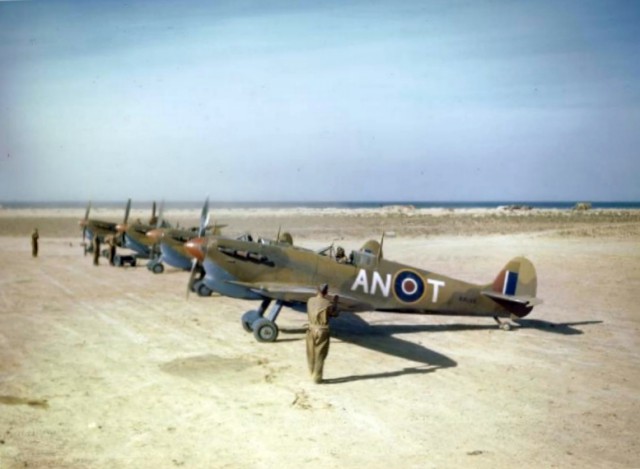
Spitfire VCs of 417 Sqn RCAF in Tunisia 1943.
However, the Spitfire’s victory-to-loss ratio was far greater due to its enhanced features measuring out to higher performance. Therefore, the Spitfires were better at luring the Luftwaffe fighters in, while the Hurricanes were prepared to hold steady and attack from the rear.
Once the Battle of Britain had finally come to a close, RAF Fighter Command took on the Spitfire as its new military backbone, creating a stronghold force that was once the job of the Hurricane fighters. These models were in action all over the world, including the Mediterranean, European, Pacific and South-East Asian zones.
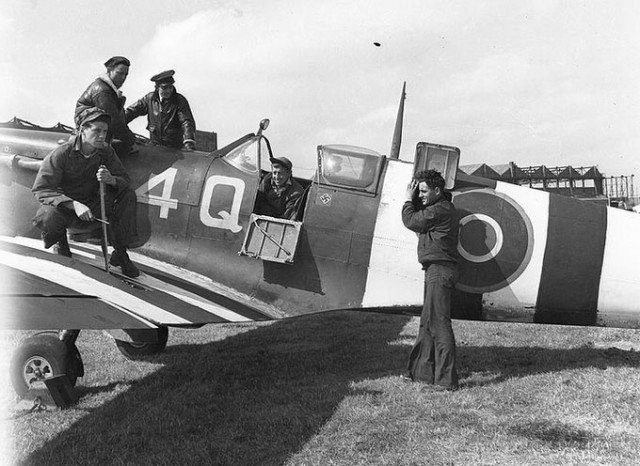
Spitfire VB in D-Day stripes.
The pilots were absolutely in love with their new air support, and the Spitfire became a triple-threat as an interceptor, a photo-reconnaissance plane, and a fighter-bomber and trainer.
The Spitfire was the golden child of the British air force all the way through the 1950s. And with enhanced engine use came even greater performance, so the Spitfires only continued to improve over time.
Spitfires that Survived The War
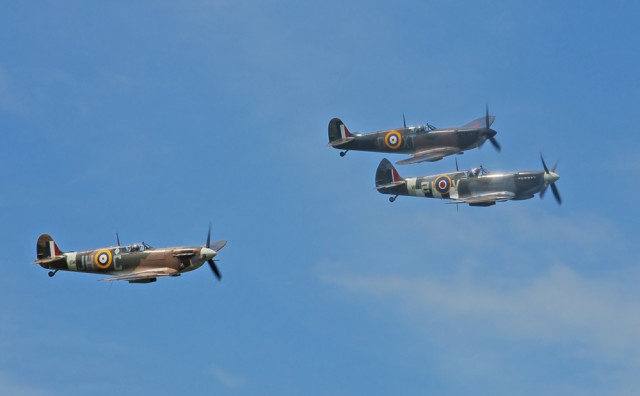
A formation Spitfire flypast from the Yorkshire Air Show. Gareth Davies – CC BY-SA 3.0
There are 55 Spitfire aircraft still in good enough condition to head up into the clouds today, but many are now on display in various museums.
For instance, the Chicago Museum of Science and Industry has at their disposal a static Spitfire with another Spitfire dive-bomber. One of the oldest surviving Spitfire models, the Mark 1, is currently being preserved at the Royal Air Force Museum Cosford in England.
It flew for a year in June 1940 before it took some damage; after that, it became mostly usable for training procedures. However, it became one of the Battle of Britain veterans, earning it a seat in future museum preservation.
Fantasy of Flight, an aviation attraction for tourists in Polk City, Florida has what is probably the one Spitfire restored with most of its original parts. It’s still in airworthy condition due to a six-year renovation in the 1990s at England’s Personal Plane Services. It has all of the machine guns, cannons, gun sights and working radios installed that it did at its inception.
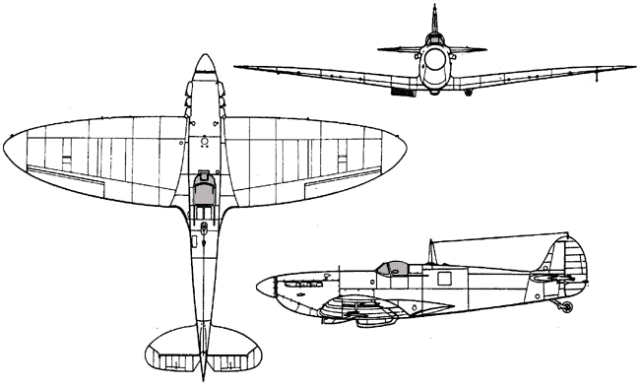
Supermarine Spitfire.
And Thomas Kaplan, an American billionaire, ended up restoring two MK 1 Supermarine Spitfires, of which there are only four left able to fly in total in the world. One was donated to the Imperial War Museum while the second one was auctioned off for 3.1 million pounds in July 2015 at Christie’s in London.
The Spitfire Makes its Hollywood Debut
The Spitfire’s undeniable popularity since its WWII days have made it a star of various films over the years, as a symbol of British resistance in the face of enemy warfare.
The First of the Few (a movie otherwise entitled Spitfire in the US and Canada), is a British film directed by Leslie Howard, who plays a version of R.J. Mitchell. The film pulls together footage of actual Spitfire aircraft in flight, and Howard spent much of his time researching and finding the best aerial footage he could use to put on screen. Mitchell’s wife and their son Gordon were even involved in the production.
A black and white film called Malta Story, starring Alec Guinness, Jack Hawkins, Anthony Steel and Muriel Pavlow relates the events of Spitfires being used as Malta’s best defense in the war.
Recounting the events of the real attack, Battle of Britain starring Laurence Olivier, Christopher Plummer, Michael Caine, and more Hollywood stars showed several sequences of up to 12 Spitfire planes in action, along with other British and German aircraft replicas. Guy Hamilton, the director, wanted to give the film a sense of real-life action.
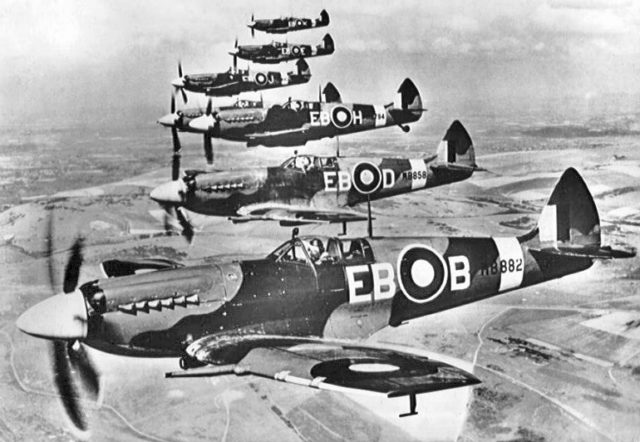
Supermarine Spitfire LF Mk XIIs of 41 Squadron in April 1944.
The Spitfire model was even represented in a more recent episode of the classic and immensely popular BBC show Doctor Who, titled “Victory of the Daleks.” The episode covered a Blitz attack by aliens, who were seeking to take over the world. Three Spitfires end up being modified to travel through space to defeat the invaders and defend London.
Overall, the Supermarine Spitfire aircraft certainly has quite a following of enthusiasts, happy to see its powerful performance and historical significance carried on over time.





